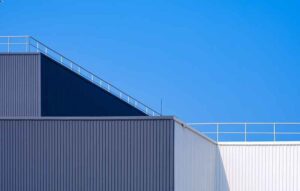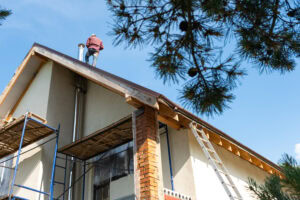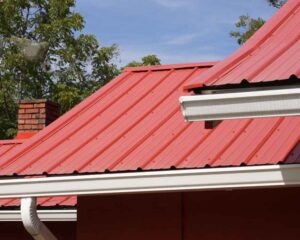Roof Maintenance: Eavestrough Tips:
When we think of our home’s exteriors and how they protect the rest of the dwelling, we generally think of the larger items like the roof, siding or stucco, and windows. However, one of the exterior items that is often overlooked by homeowners is the eavestroughing (or gutters) and downpipes.
Take a walk or drive through an average neighbourhood in the city and you may find one or two houses in the area with broken eavestroughing hanging from the roof, or missing downpipes. If neglected for some time, this can cause serious problems to the home’s exterior and interior. Even something as simple as rotting leaves in the eavestrough can cause problems later on, such as: rotting wood fascia, roof leaks at the eaves, damaged shingles, and broken eavestroughing.
Some of the clues that you have eavestroughing issues are:
- A damp basement or cracks in the foundation of your home can both be signs that you have eavestroughing issues.
- Look for signs of erosion on the ground, under roof corners, or other unexpected areas. This could be the cause of leaking eavestrough corners, ends or loose downpipes.
- Discolored siding may be the cause of a leaking eavestrough or downpipe.
- Mold or peeling paint on your home’s exterior may be caused by water damage from the eavestroughing.
- If you can see that a particular section of eavestrough is not sitting tight to the fascia and sagging, there may be a blockage, loose connectors or rotten fascia board.
- Look for any loose, crushed or missing downpipes.
What can you do to ensure longer life from your eavestroughing and avoid costly repairs? It is a good idea to take some time every Spring and late Fall to inspect your home’s exterior for problems that may arise.
- For areas that you can safely climb up to on a ladder, check in the eavestrough for a build up of leaves and other debris. Any significant build up will cause blockages that can lead to other issues.
- Use a garden hand shovel to carefully remove any build up, ensuring that the drains to the downpipes are open.
- Use a garden hose to wash away whatever is left. The water should drain properly down the pipe.
- Carefully hammer in any loose eavestrough nails back into the fascia.
- If your eavestroughing is still in excellent condition, have a leaf-guard installed. This will prevent any new build up of leaves in the fall.
- Tighten any screws where the downpipe connects to the eavestrough. Over time, these screws can loosen, causing the downpipe to fall off.
- If possible, open any downpipes that have been stepped on and crushed at the ground.
If your roof eaves are too high or difficult for you to safely inspect yourself, don’t hesitate to call the professionals at Jayson Global Roofing. We can recommend a cleaning, repair or replacement of your eavestroughing and downpipes, allowing your home to function how it should in every season.




